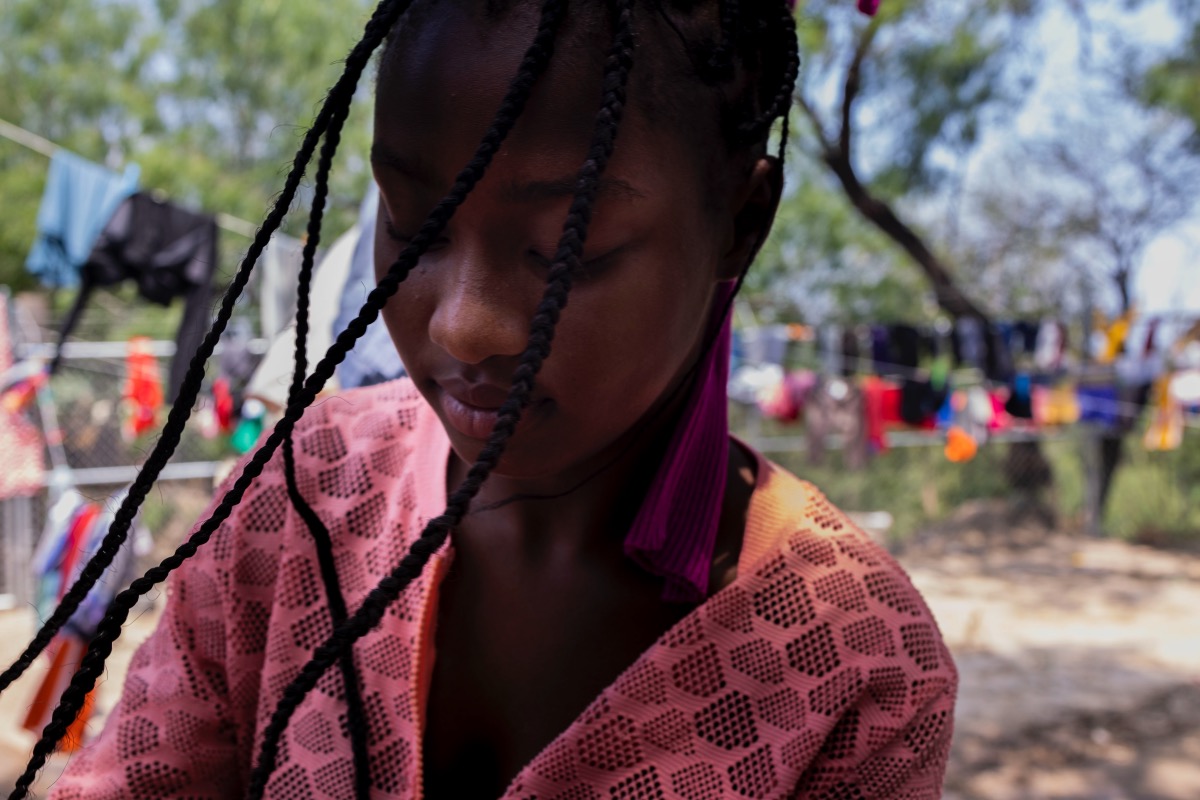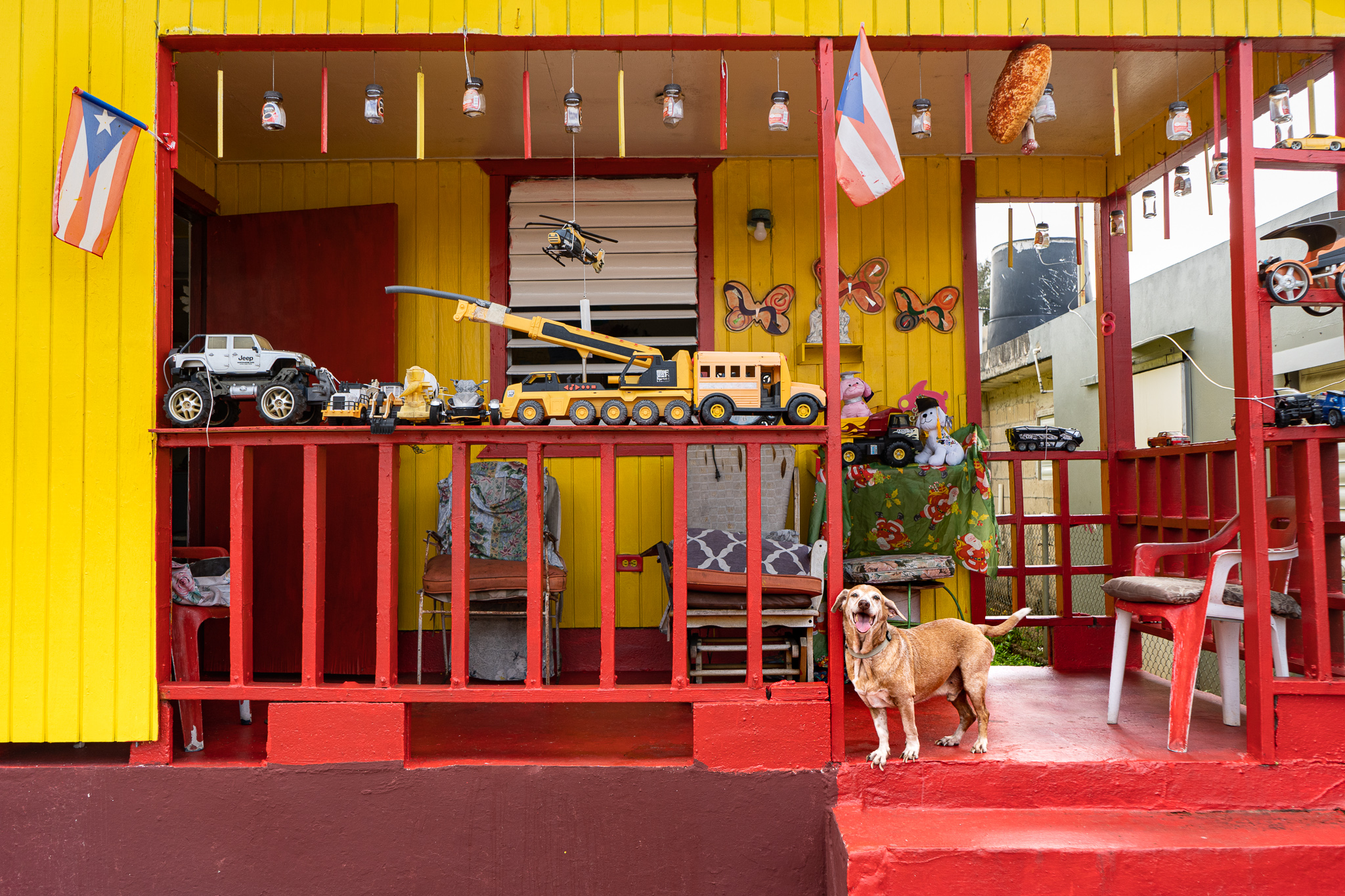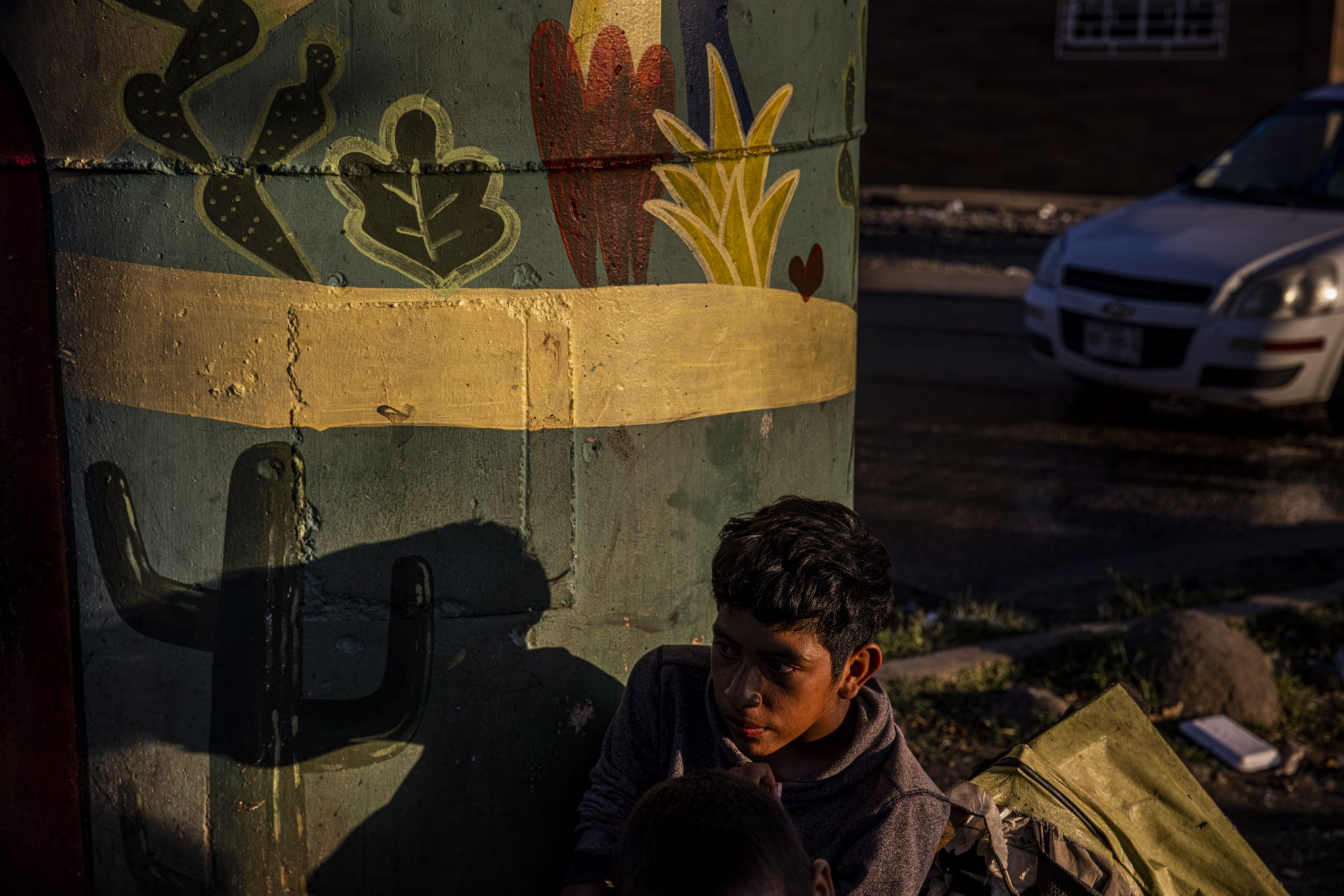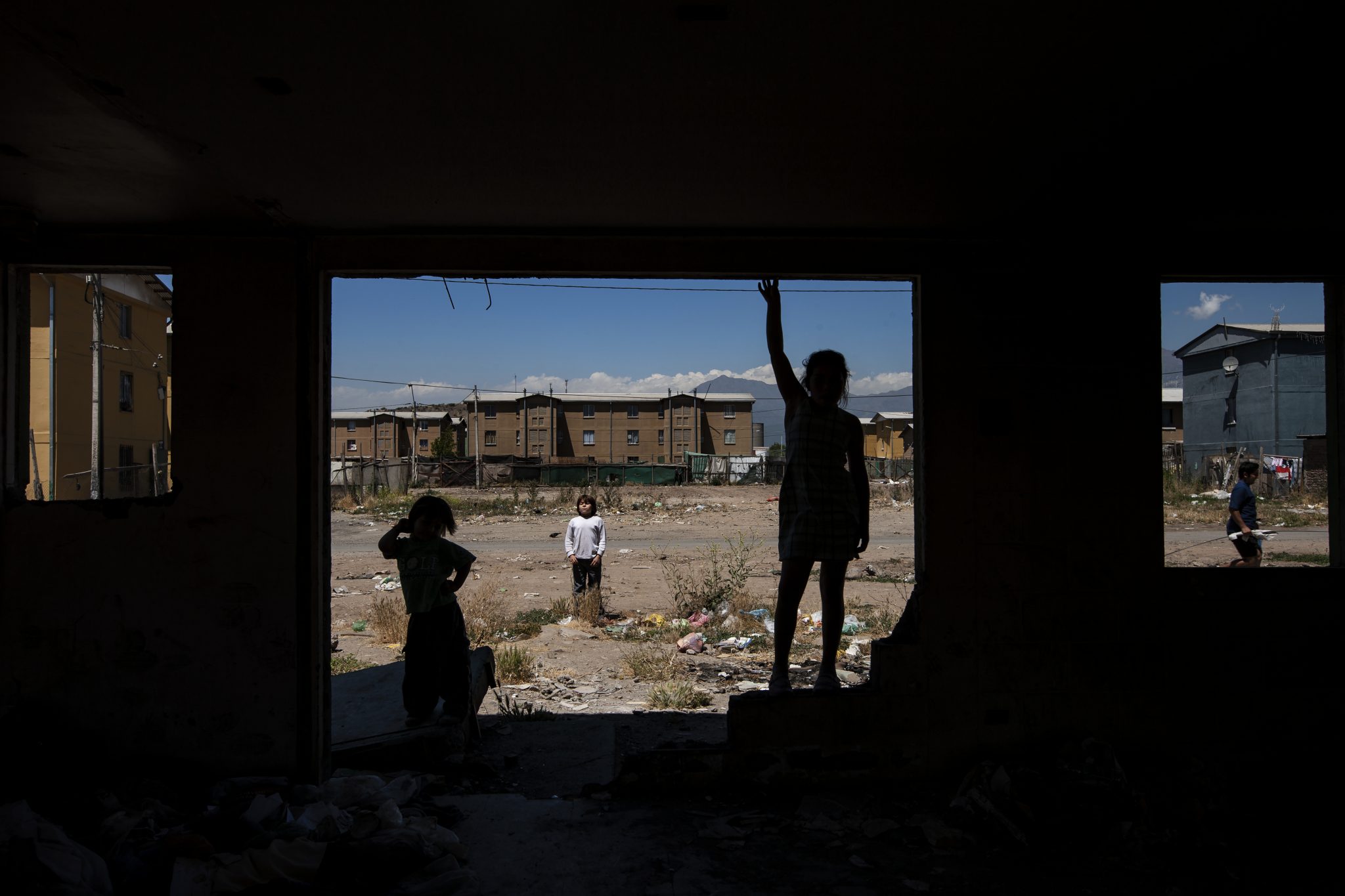

Portrait of Mara, 13, at the “Kaleo” shelter in Reynosa, Mexico, May 5, 2022. Mara and her family left Haiti two years ago with the hope of finding a better life. After crossing more than 10 countries in the Americas, they await an opportunity for asylum in the United States, where Mara dreams of being a nurse to help her mother. (Yael Martinez/Magnum Photos)
Every year since 2018, one event has brought a bit of Latin America to New York City.
The Latin American Foto Festival, which was held this year at the Bronx Documentary Center (BDC) from July 14 to 31, captured the humanity, richness, and complexity of Latin America, its people, and its cultures.
With outdoor and indoor photos on display, this year’s festival featured large-scale photographs throughout the South Bronx’s Melrose neighborhood by both emerging and established, award-winning photographers from Colombia, Argentina, Chile, Venezuela, Mexico, El Salvador, and more.
“We always try to bring the work of Latin American photographers who work and live in Latin America. We want to help them grow professionally, especially because they’re not well-known here in the U.S.,” said Maria de la Paz Galindo, the BDC’s community engagement coordinator. “That’s one of the goals of this festival. Another goal is that we want people to learn about the cultures that are from Latin America.”
This year the photographs represented long-term projects on family, memory, culture, and social issues.


In “Casita amarilla,” a dog stands on the balcony of a bright yellow and red wooden house. The house is decorated with various transportation toys and Puerto Rican flags. (Annie Y. Salaña)
One project, Casitas by Puerto Rican photographer Annie Y. Saldaña, delved into the theme of memory, an intimate work guided by the nostalgia for a place that seemed to no longer exist. It documented those Puerto Ricans who live in wooden homes in the mountain areas of the island.
“My grandmother always shared stories of her life in the mountains, its beauty, and complexity, living life in harmony with nature free from the constraints of modern life,” Saldaña said, “but also walking barefoot on unpaved roads for hours to arrive at the nearest school. In her honor, I began documenting wooden houses in 2013.”
In 2017, the island was hit by Hurricane María, and the images Saldaña took now stand as testaments to the resilience of the local population.
Saldaña interviewed four families living in rural communities of Canovanas, Bayamón, and Orocovis, who spoke of the difficulties surrounding climate change and the lack of government support, but also the beauty of living in the mountains, bathing under the rain as children, and creating a strong community.
“There was a need for these families to get visibility, for fellow Americans and for the world to know what’s happening in the mountains and the conditions that they’re living in, the struggles that they face,” Saldaña said.
Another theme explored at the festival was immigration. Mexican photographer Yael Martínez and filmmaker Sergio Ortiz Borbolla collaborated on a project titled Looking for Hope at The End of the Road. They spent several weeks along the migration route between Honduras, Mexico, and the U.S., where they met people taking extreme risks to achieve their dreams of a better life in a safe place.


David Geovany Valenzuela, 15, resting under a bridge in Coatzacoalcos, Veracruz, Mexico, March 2021. (Yael Martínez/Magnum Photos)
“I think my work is some sort of a mirror,” said Martínez. “I have always tried to generate empathy through my work. What we are seeing in those pictures is a reflection of ourselves, in the sense that all of us pursue dreams, we look for home, we set out on a quest, and we face obstacles along the way.”
Martínez highlighted the importance of the festival and said it was a space where the community could see photography as something in which they could participate.
“What was interesting to me was that my work was going to be shown in an area where the population is mostly Mexican or from Central America,” he said. “And it was important for us to show it there (in the Bronx) to spark a dialogue between the photos and the community.”
From Chile, photographer Alejandro Olivares brought a series of photos titled Living Periferia, which document the life of adolescents on the outskirts of Santiago, where they are in contact with violence, drugs, and arms trafficking.
“I received comments about my work through social media. One of them was from a person who was surprised to see this reality in Chile,” Olivares recalled. “She thought Chile was a more developed country and with more equity than any other country in Latin America. That’s the concept many used to have and still have of Chile. Chile is in fact among the most unequal countries in the world.”


A group of children plays among the ruins of a building in the Bajos de Mena settlement, Puente Alto, Santiago, Chile. (Alejandro Olivares)
Olivares’ photos capture social isolation and show a neglected world that “consists of vast ghettos in the farthest corners of Santiago where the State has managed for years to push aside what it would rather not see,” as described on the board that displayed his photos at the BDC.
He wishes more people would pay attention to the issues he presents in his work. “I would like people to feel something and to take a piece of solitude with them,” he said. “I know it’s impossible to put ourselves in someone’s else’s shoes, but at least I would like people to feel something and not to normalize indifference.”
Reflecting on the festival and the theme of family, Galindo recalled an image that connected with her as an immigrant mother. It’s a photo from Nuevayorkinos, a project that depicts the life of Latin American families who came to the United States in the ’70s, ’80s, and ’90s.
“It’s an image of a family with a little girl. In the caption, she expresses how important it was for her that her parents were present at special events in her life,” Galindo said, “I thought to myself: that little girl could have been my own daughter.”
***
Juan B. García is a bilingual reporter, writer, and photographer. Born in Peru, he is a graduate of the Craig Newmark Graduate School of Journalism at the City University of New York. Twitter: @BernandoGarcia


